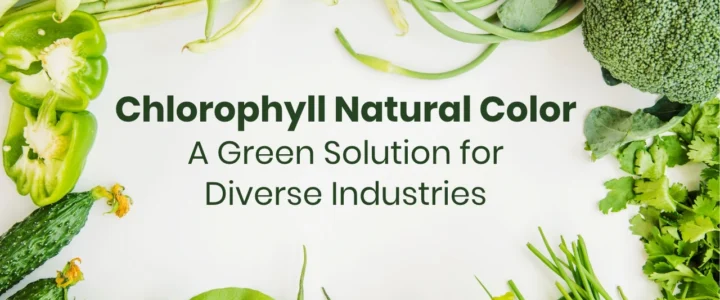Growing demand for quality foods is one of the reasons behind incorporating new technologies and ingredients. Health issues and concerns like high cholesterol, cancer, or obesity are inescapable in today’s modern fast-paced life. Population aging, urbanization, and the increased need for convenience foods increase the demand for high-quality nutritious food options. Consumers believe that nutrition has a strong scientific basis for relating to their well-being, which increases interest in functional foods. Functional foods provide health benefits beyond plain nutrition, therefore helping to diminish the risk of chronic diseases. They either consist of beneficial compounds or remove adverse ones. Resistant Starch Supplements are among these beneficial components; they are functional ingredients used in wide applications of fiber-rich foods.
Resistant Starch and Types of Resistant Starch
Resistant Starch is that part of the starch that cannot be digested as it travels through the digestive tract. There are five types, each with unique features:
Resistant Starch 1 (RS1) – This occurs in whole grains, seeds, and legumes.
Resistant Starch 2 (RS2) – Found in raw potatoes, green bananas, and some legumes.
Resistant Starch 3 (RS3) – Occurs when certain starches such as potatoes and rice are cooked and then allowed to cool.
Resistant Starch 4 (RS4) – A chemically modified starch with unique features.
Resistant Starch 5 (RS5) – A relatively more recently identified variety with potential functional benefits.
With a low water-holding capacity, resistant starch enhances food texture, improves crispiness, and reduces oil absorption in deep-fried foods, making it highly valued by the food industry. Resistant starch manufacturers are increasingly incorporating RS into functional food products to meet consumer demand.
Health Benefits of Resistant Starch
1.The Role of RS in Prevention of Colon Cancer
Other findings indicated that butyrate, the short-chain fatty acid produced during the fermentation of resistant starch by the large intestine, plays an important role in reducing the chance of colon cancer. RS elevates fecal bulk, decreases pH, and stimulates the production of butyrate-producing bacteria, which would prevent the malignant transformation of cells. Studies also show that butyrates inhibit the proliferation of tumor cells due to arrest at one of the phases of the cell cycle, the G1 phase. Such results suggest why RS is significant for gut health.
2. Resistant Starch and its Anti-Hypoglycemic Effects and Management of Diabetes
The glycemic index (GI) of starchy foods depends on factors like the amylose/amylopectin ratio, starch granule structure, and processing methods. RS slows digestion, leading to a gradual glucose release, lower insulin response, and extended satiety—key benefits for diabetes management. Unlike rapidly digestible starch, which spikes blood sugar levels, RS digestion occurs over 5–7 hours, stabilizing postprandial glycemia and insulin levels. This has led to growing interest in resistant starch supplements for individuals with diabetes. Chemically modified types of resistant starch, such as RS4, have been shown to lower the glycemic load when incorporated into breads and baked products.
3.Resistant Starch as a Prebiotic
Prebiotics are indigestible food components that encourage the growth of beneficial gut bacteria. As in the case of inulin and oligofructose, resistant starch selectively stimulates probiotic bacteria, especially bifidobacteria, thereby promoting gut health. Experimental studies suggest that RS consumption alters SCFA profiles in the large intestine, improving the gut microbiome. Because RS is not digested in the small intestine, it acts as an effective prebiotic for enhancing microbial balance.
4.Hypocholesterolemic Effects
Research on resistant starch suggests a positive effect on lipid metabolism. It has been found that feeding rats with resistant starch reduces their total cholesterol, triglycerides, and LDL. Consumption of Resistant Starch increases cecal SCFA production, which is associated with lower plasma cholesterol and triglyceride levels. However, at this point, more human studies need to be conducted, though these findings suggest Resistant Strach can be a promising ingredient for heart health.
5. Inhibition of Fat Accumulation and Weight Management
Resistant Starch has been studied for its involvement in fat metabolism and appetite regulation. Some studies indicate that diets high in types of resistant starch increase fat oxidation and decrease fat deposition through reduced insulin secretion. Resistant Starch intake has also been associated with increased postprandial satiety, as observed in a study where RS-rich bread resulted in longer satiety than white bread. More research is needed, but RS appears to be a promising natural additive for weight management.
Conclusion: Future of Resistant Starch in Functional Foods
Resistant starch manufacturers are playing a vital role in developing innovative solutions for the food industry. RS has emerged as one of the strongest functional ingredients and holds the prospect of numerous beneficial health outcomes. It aids digestive health, controls glycemia, reduces cholesterol, and maintains body weight. Ongoing research will continue to expand its applications due to the increased demand for functional foods by consumers, creating further opportunities for resistant starch supplements in the pursuit of global health and nutrition.













